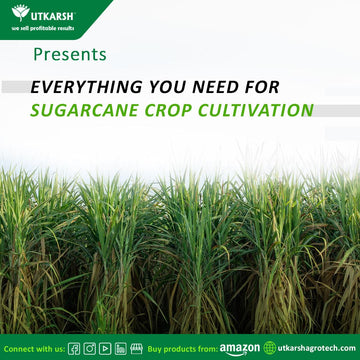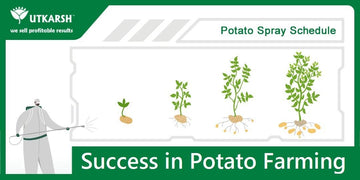
Introduction:
Soyabean is considered a “golden bean “as it is an exceptionally nutritive and very rich protein food. it belongs to the legume crop family. It is basically a native of East Asia. Soyabean oil is one of the most famous edible oils in the Indian subcontinent. It can be used as a milk product and is available in form of soya chucks which are called “meal-maker” in India. They are consumed as oilseeds as they are prepared of around 18% oil. Soyabeans are cultivated in conditions similar to corn. Soyabeans are utilized in the preparation of oil, biofuel, crayons and some other uses too. Its production is nearly identical to corn production.
Health benefits:
- 1. Soyabeans contain omega-3 fats which are heart-friendly.
2. Soyabeans deliver essential minerals such as calcium, magnesium, iron, and selenium.
3. Soyabeans are low in fat with zero cholesterol.
4. They are an excellent source of fiber.
5. It is a good source of enriched calcium and vitamin b12.
6. Soyabean contains isoflavones which are good are good in reducing the risk factor of heart-related diseases and different types of cancers.
Soyabean cultivation in India:
Madhya Pradesh is the leading state in the production of soyabeans. During the last couple of years, this state has developed with average productivity of 796-885 kg/ha. soyabeans have been planted in Madhya Pradesh in an area of about 4.4 million ha and production of around 3.9 million tonnes.
Production and productivity trends:
Soyabeans have been planted as a commercial crop mainly in temperate ecologies for thousands of years. Firstly, they were grown in northern Asia and in more recent years in North America and in countries of the Southern area of Latin America. During the past few decades, constant efforts have been made by crop scientists and soyabean farmers leading to a rise in the world production of soyabean from 155.1 million metric tons in 1999 to 284 million metric tons in 2013.
Cultivation of Soyabean Farming:
Let us discuss about Soyabean cultivation in detail;
Planting:
The middle of June is the best period for sowing soyabean. Seeds are to be sown by seed drill technique in rows spacing 45-50 cm. And seeds spacing between 4-7 cm. A seed rate of 25-30 kg is preferred for sowing on a 1-acre land.
Seed treatment:
Application of Rhizoz, Phosphoz, or with talc formulation of Utkarsh Trichoz.
Soil conditions:
loamy well-drained fertile soil is competent for cultivating soyabean. Land formation for soyabean should be done by proper ploughing followed by laddering.
fertile loam soils with a Ph between 6.0 and 7.5 are most suitable for the cultivation of soyabeans. At the other end of the scale, it is not recommended to plant soyabeans in soil with a Ph greater than 8 as micronutrient deficiencies occur such as Zinc (Zn) and iron (Fe).
Weather conditions:
Soyabeans can not tolerate drought as their roots are relatively shallow and the root structures limit water absorption during dry periods. Moreover, Low rainfalls on clay soils will reduce the chances of seed germination and plant formation.
Irrigation:
Soyabeans are usually cultivated under rainfed conditions. If grown in humid season, then they will require 5-6 irrigations.
Irrigate immediately after sowing. Provide irrigations within 7 to 10 days intervals during summer and winter seasons. Soyabeans are very sensitive plants to excess moisture and the crops are adversely affected. The crops should not suffer due to water stress from flowering to maturity.
To alleviate moisture stress spray either uses kaolin 3% or liquid paraffin at 1% on the foliage.
Fertilizers:
Soyabean can utilize atmospheric nitrogen, though that is not always sufficient. Therefore, crops are endowed with 10-15% of the total nitrogen requirement. 12.5 kg of Nitrogen per acre and 32 kg per acre of Phosphorus are sufficient and Potash is required only if deficiency is acknowledged.
Harvesting:
Crops develop into mature and are ready to be harvested when leaves turn yellow and pods get dry. Harvesting is to be completed by hands or by sickle or by a threshing machine.
Plant protection:
There are some pests such as whitefly, Tobacco caterpillar, and armyworms who can attack soy crops, for protection from them, accurate pest control procedures can be used. The details are as follows;
- A) Whitefly:
Due to the attack of these insects, the leaves turn yellow and these insects spread the mosaic disease in soyabean. To control it, the seeds need to be treated with Thiamethoxam, installation of sticky tapes, and spraying pre-mix insecticide. Use Utkarsh Bio-Clean sweep with 2-3 ml/liter of water.
- B) Tobacco caterpillar:
Certain caterpillars eat leaves that give the appearance of a whitish-yellow web. To protect the plant, install pheromone traps, remove affected parts, spraying the necessary insecticides. Use Utkarsh Bio-Clean sweep with 2-3 ml/liter of water.
- c) Armyworms:
The beet armyworms and fall armyworms mostly affect late-planted seedling soyabeans and can be serious pests.
To prevent its plants, apply fertilizers including potash and spray pesticides such as quinalphos or chlorantraniliprole.
Use Utkarsh Bio-Clean sweep with 2-3 ml/liter of water.
Plantation threats and constraints:
- The following points explain the threats to the cultivation of soyabean;
1. Non-availability of the proper amount of quality seeds of adequate variations.
2. Most of the areas where its cultivation takes place are dependent on rain.
3. production technology is not up to date.
4. Its seeds are the least storable and are vulnerable to mechanical storage.
5. Soil moisture pressures at critical development periods, especially the seed-filling stage.
6. High-temperature pressures at critical growth stages.
It’s over a huge area and holds a proportion of about 32% of the world’s production, followed by Brazil at 31%, Argentina at 19%, China at 6%, and India at 4%
Source-www.soystats.com
To know more about Soyabean farming, Watch our Webinar Recording of Profitable Soyabean Farming:
उत्कर्ष के संग आपकी हर फसल होगी सफल।
Available on UtkarshAgro.com | Amazon | Flipkart | AgriBegri | Bighaat | Moglix | Agrosiaa | Toolsvila | Agri junction | Krishisuvidha | Ecotika | Shopee | Bazzu.in
Visit Website: https://utkarshagro.com/
𝐂𝐎𝐃 𝐚𝐧𝐝 𝐄𝐌𝐈 𝐨𝐩𝐭𝐢𝐨𝐧𝐬 𝐚𝐫𝐞 𝐧𝐨𝐰 𝐚𝐯𝐚𝐢𝐥𝐚𝐛𝐥𝐞.
May you have the best yield ever! Feel free to contact Utkarsh for any doubts and advice.
If you have any further queries, feel free to reach out to us on
Call: 8866543678 or chat: http://wa.me/918866543678
Call: 9924864422 or chat: http://wa.me/919924864422
Call: 9664961571 or chat: http://wa.me/919664961571
Landline: 02621-255972
Visit our website: https://utkarshagro.com/
Email ID: rd@utkarshagro.com
Stay connected with us to learn more tips and tricks. All you have to do is follow us here:
Facebook: https://www.facebook.com/utkarshagrochem/
Instagram: https://www.instagram.com/utkarshagrochem/
YouTube: https://www.youtube.com/c/UtkarshAgrochem
Twitter: https://twitter.com/UAgrochem
LinkedIn: https://www.linkedin.com/company/utkarsh-agrochem-pvt-ltd/
Pinterest: https://in.pinterest.com/utkarshagrochemsocial/
Written by:
Pearl Tailor
Affiliate Writer with Monkey Ads











